Success comes from three things, Pearl Fryar told me the other day — from work, passion and marketing. Fryar has them all.
Pearl Fryar knows what he’s good at and cheerfully shares his knowledge with even a casual visitor like me who stopped by unannounced on a Saturday afternoon. I found him working in the garden but he stopped to give me and my husband a tour.
He told us how, starting in 1980, he transformed a flat cornfield into an amazement of abstract topiary. Without horticultural training, he had no prior conceptions of what he could or couldn’t do. So using plants that a near-by nursery was throwing away, he began to sculpt the shapes he saw in his head. He did what he wanted to do. And that free spirited approach has resulted in a garden with a personality so individual that it has attracted attention world-wide.
Pruning shears, patience and vision are the tools he has used to create his magic kingdom. I was particularly enamoured of this tree, a galleon under full sail.
But where I saw a galleon, from a different angle my husband saw a Jack pine, painted by Tom Thomson. Fryar says he likes people to use their own eyes and their own imaginations.
“I like to let people see what they want to in my plants. The creativity comes in making a shape that speaks to me in one way but may say something else to everyone else.”
Because he didn’t follow rules, or horticultural trends and fashions, or emulate someone else’s style, Pearl Fryar has developed his own. And doing that, he accomplished things that, according to one horticultural expert, should not have been possible.
He started by building a driveway and lining it with dwarf yaupon hollies. Over the year he used some of those hollies to spell out his signature message — the word love.

Small shrubs lining the driveway at Pearl Fryar’s Topiary garden give a hint of the magic that is to come.
Love and peace appear throughout the garden, often in the artworks that are spotted here and there. Fryar makes his art from bits and pieces collected from scrap heaps and who knows where. He mentioned that although his ‘junk art’ has been displayed widely, it isn’t for sale.
Fryar’s ingenuity reveals the passion that he names as one part of the garden’s success. He wanted a fountain in the garden. When someone gave him an old pot bellied stove, he created one.
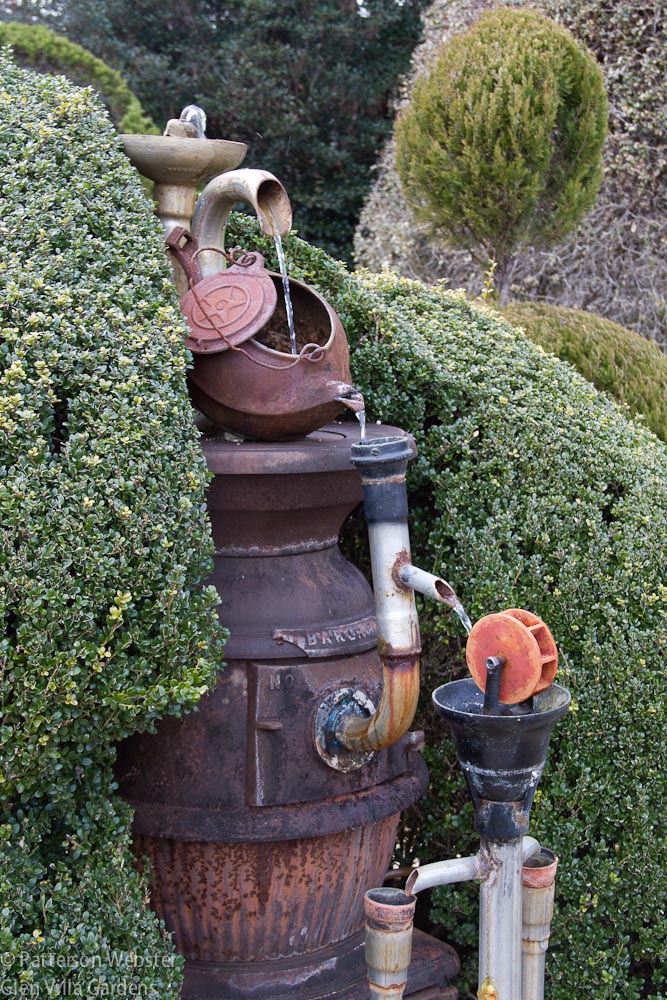
A fountain made of recycled materials features an old pot bellied stove, a kettle and various bits and pieces that Fryar found.
The fountain is folksy, personal, idiosyncratic — a bit like Fryar himself. On the flat piece of ground beside the house, the words Peace, Love & Goodwill are cut into the ground. In the summer, Fryar adds begonias to light up the sentiment.
Although Fryar himself made no mention of it, I was struck by how he has combined colours and textures to create patterns and contrast. The trees below were among the first he planted. From tiny rejects, they have grown into full-fledged individuals.
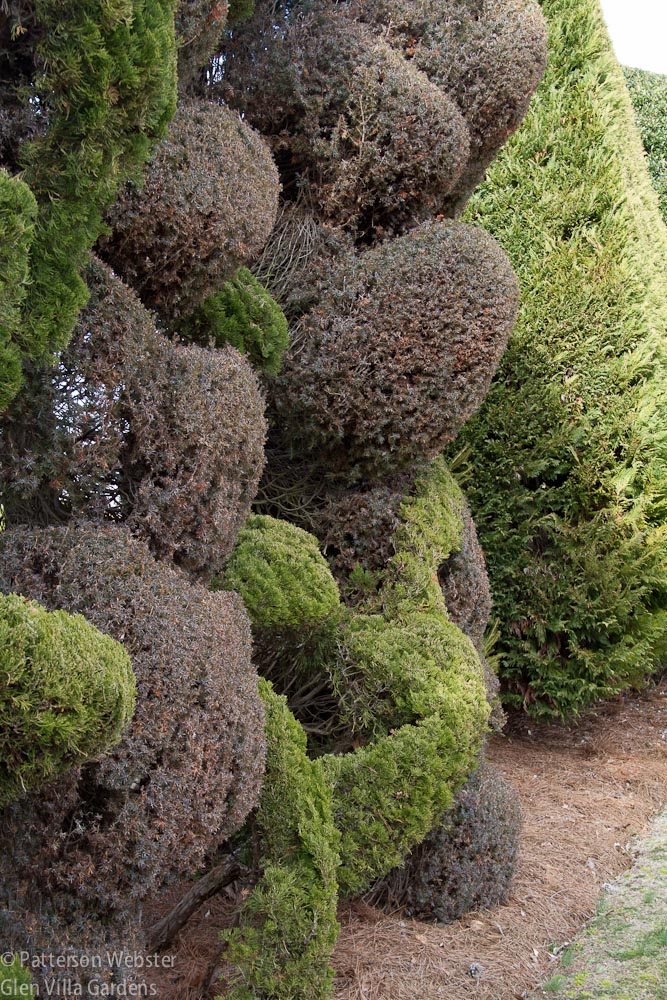
Fryar planted these trees along the drive to provide a privacy screen. Colours and shapes show his distinctive flair.
Geometric shapes or fantastical animals are commonly seen in traditional topiary gardens. Fryar has rejected these in favour of a more free-form approach.
Work, passion, marketing: the combination has made Pearl Fryar’s topiary garden the extraordinary place it is. The sort of place that attracts attention from horticulturalists around the world. That ends up featured in books about acclaimed international gardens like Villa Medici, Saiho-ji and Hestercombe. That sits by an ordinary road in the small town of Bishopville, South Carolina.
The combination had made it the sort of garden that inspires others. Today, along Broad Acres Road, neighbours are following Fryar’s example. Down the street, one family has outlined their generously sized lot using forms I’ve seen in gardens in Italy, France and England: flat hedges topped on interval with round balls, two-tiered urns, perfect pyramids.
Another neighbour’s garden features curved forms set next to a square brick column.
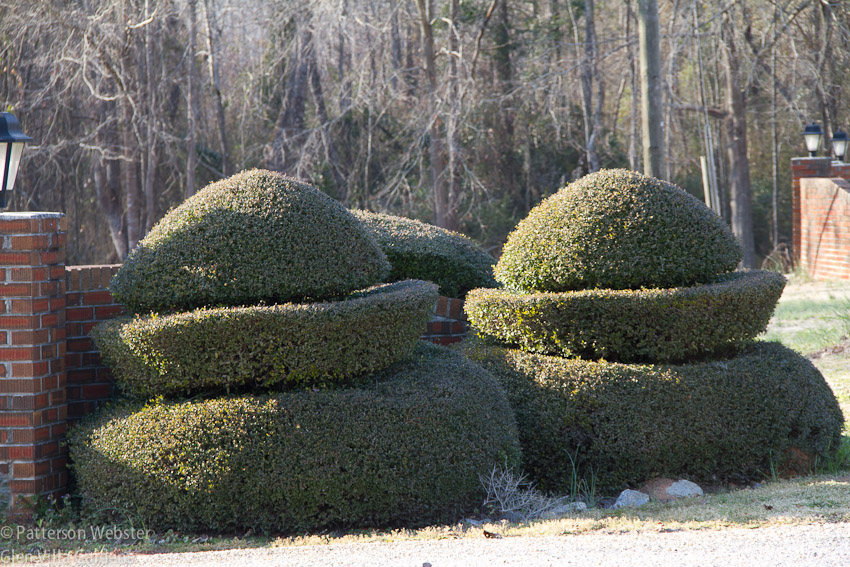
More chess pieces? Squat figures waiting for the bus? Who knows what fantasy generated these shapes.
The source of the neighbours’ inspiration is obvious. Pearl Fryar is an inspirational story-teller, and one of the stories he shared was about Rosemary Verey. When that doyenne of English gardening visited him some years ago, the lady wearing pearls urged the man named Pearl to travel to England so that she could show him around. The images that story created in my mind made me laugh with delight. As did the garden Pearl Fryar has created.
Bishopville isn’t easy to reach except by car. It is located west of Florence and east of Columbia, South Carolina. It is worth the journey. It is worth the detour.


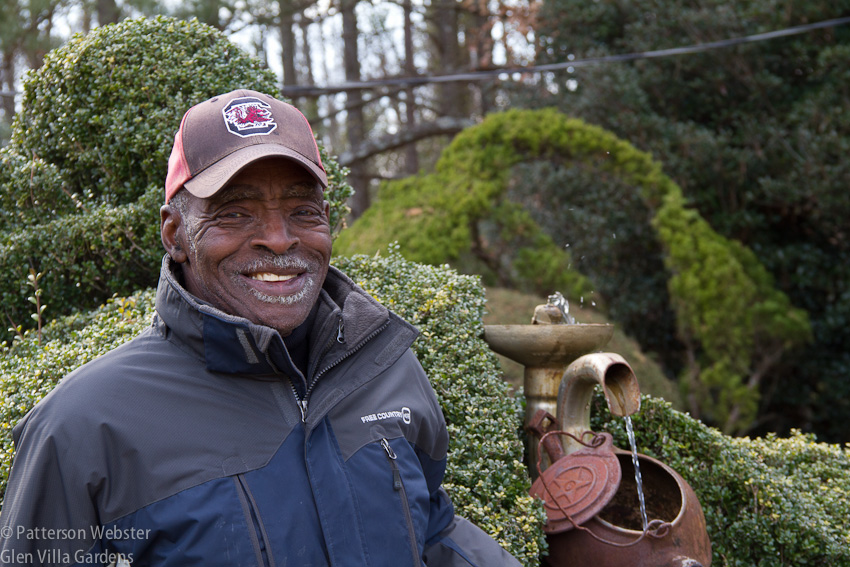
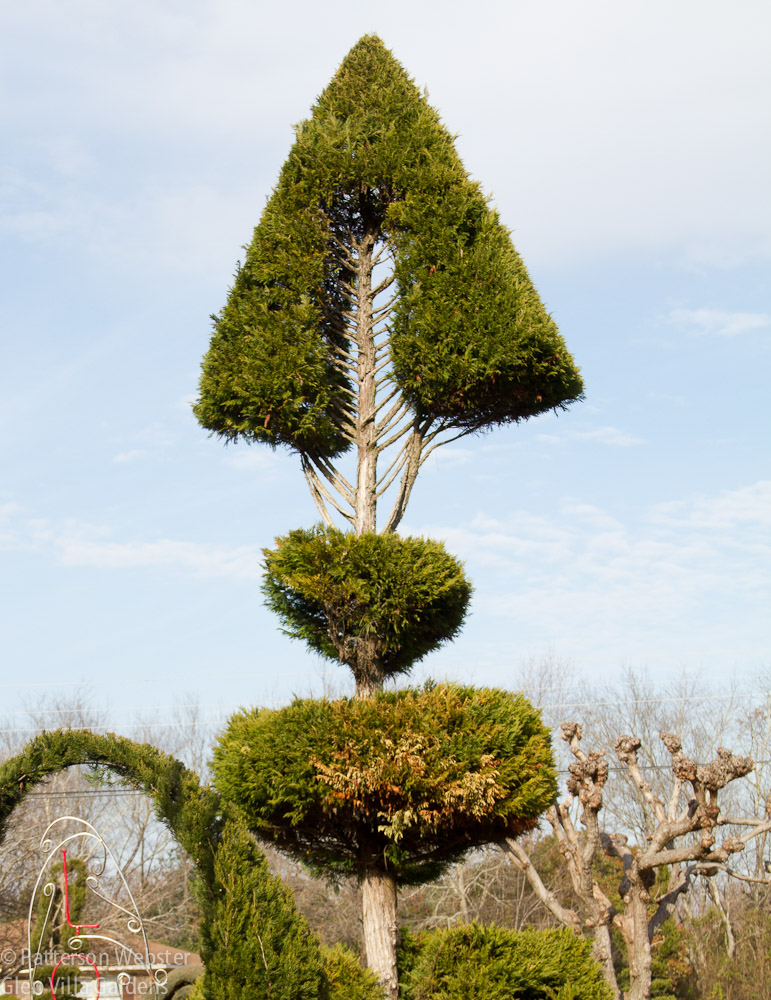


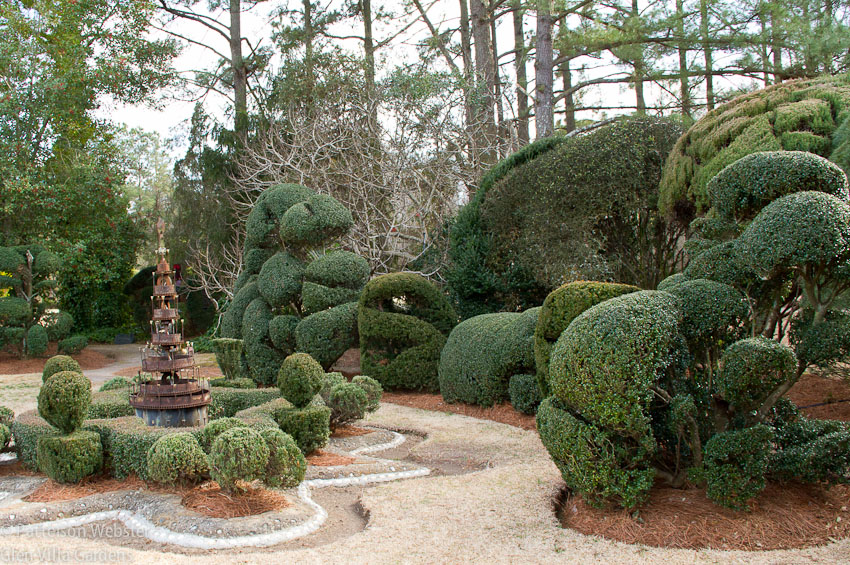
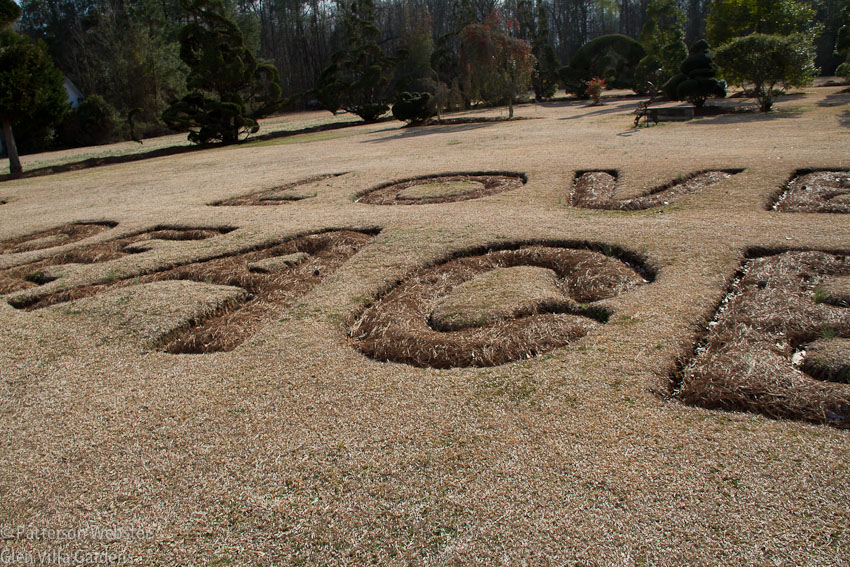
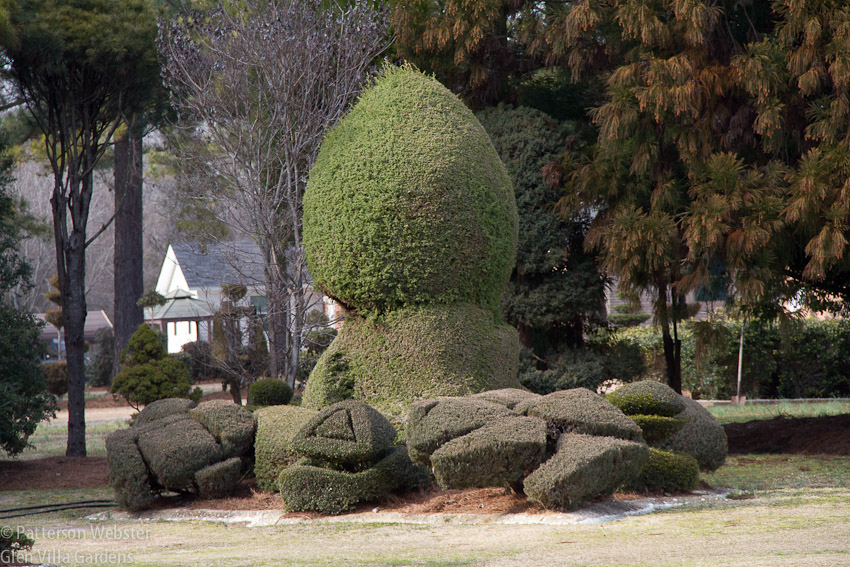

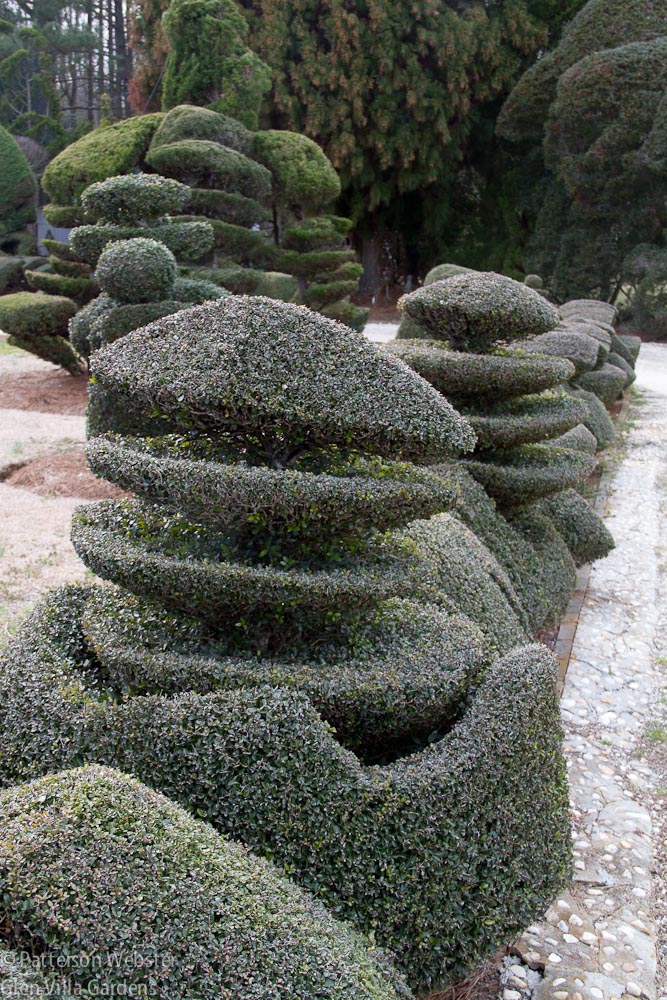




Oh, how fun! I’m glad you got to visit. If only we could all be true to our own vision, gardens would be more interesting, even if we lacked the marketing.
It was a wonderful visit, Kathy. And you are so right — if only we could all be true to our won visions. My fear is that too many who garden don’t have a vision. Winning Yard of the Month in 1985 was Pearl Fryar’s big moment — he was the first African-American to win this prize and it clearly meant, and still means, a lot to him.
I love topiary.Pearl’s story is inspirational because I am so intimidated by trying to create a topiary piece. Maybe I’ll try again.
Seeing this garden and what he has managed to create, I am also inspired to try. For me it will be the first time… let’s compare notes!
Very impressive, life’s work. Looks beautiful.
The best I can do is keep my weeds cut short every two weeks.
Well, hello Tom! Long time. Yes, Pearl’s topiary is something special. Keeping weeds down is a lifetime achievement. Hope all is well with you.